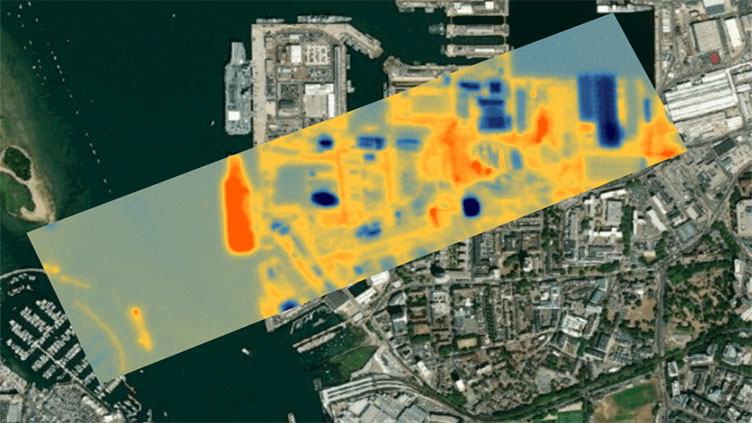World's thermometer sends back first pictures of Earth's hotspots for climate monitoring

Technology
A British-built flying thermometer has sent back its first pictures from space of hotspots on Earth
(Web Desk) - SatVu, the company which operates the satellite, has said the images "exceed expectations" and will help them "tackle those climate challenges".
A British-built "flying thermometer" has sent back its first pictures from space of hotspots on Earth.
High-resolution thermal images taken by the satellite HOTSAT-1 reveal the sun-baked streets of Las Vegas, a vast oil storage complex in Oklahoma and the intense heat of the Canadian wildfires.
HOTSAT-1, which has been dubbed "the world's thermometer", was launched by SpaceX over the summer. Unlike satellites that monitor the Earth with cameras that "see" visible light, like our eyes, HOTSAT-1 monitors infrared to register how much heat is being given off objects or landscapes.
Climate tech company SatVu, which operates the world-first satellite, said the images are a major milestone in a new era of Earth observation and climate monitoring.
Sky News was given exclusive access earlier this year to an aircraft fitted with the imaging technology as it mapped heat loss from houses in Leeds.
The images are being used by the city council and a housing charity to prioritise properties that need retrofit insulation to tackle energy bills and carbon emissions.
But by putting the technology on a satellite the company is able to download a constant stream of images around the clock, even in countries with closed borders.
Anthony Baker, CEO and co-founder of SatVu told Sky News: "This is a fantastic day. The first images exceed expectations, and we are super-excited.
"The company has been building up to this moment and now we are ready for commercial operations so we can go and tackle those climate challenges."
One image of Las Vegas reveals the grid of streets and car parks that accumulate heat during the day and then release it after dark, raising night-time temperatures.
The so-called urban heat island effect can make cities several degrees warmer, but hotspots could be cooled by planting trees.
Another image of Cushing, Oklahoma, in the US, picks out the shapes of storage tanks and pipelines that can move 1.5 million barrels of crude oil a day.
Images like this can be used to verify that operations are compliant with climate pledges and industrial regulations.


